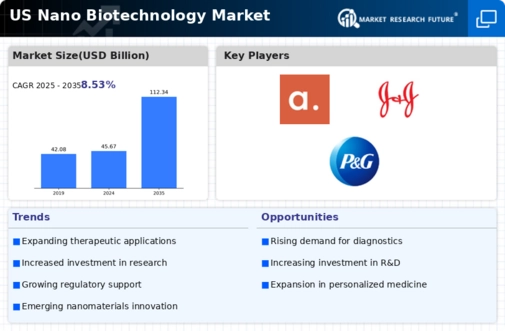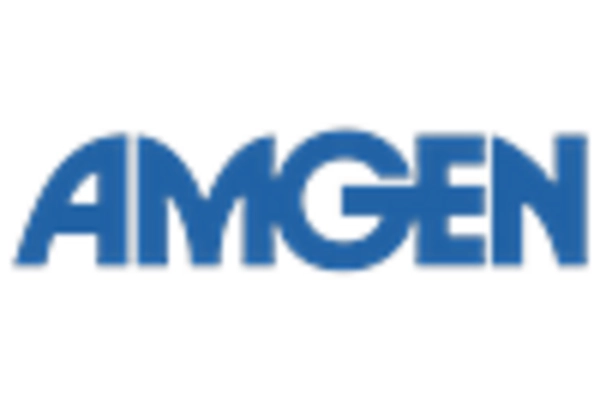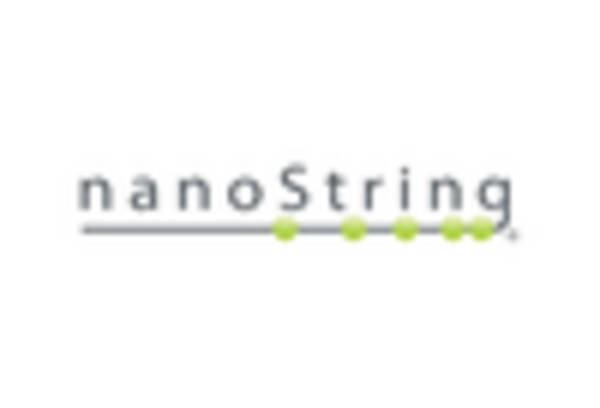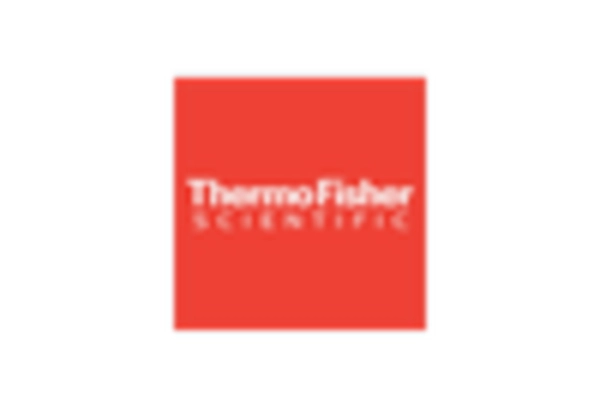Regulatory Support for Innovation
Regulatory support for innovation within the nano biotechnology market is becoming increasingly evident in the US. Agencies such as the FDA are establishing frameworks that facilitate the approval of nano-based products, thereby encouraging companies to invest in this technology. The establishment of clear guidelines is likely to reduce the time and cost associated with bringing new products to market. As regulatory bodies continue to adapt to the unique challenges posed by nanotechnology, the market is expected to benefit from a more streamlined approval process. This supportive environment may lead to an influx of new products and applications, further propelling the growth of the nano biotechnology market.
Rising Demand for Targeted Therapies
The increasing prevalence of chronic diseases in the US is driving the demand for targeted therapies, which are often enhanced by innovations in the nano biotechnology market. As healthcare providers seek more effective treatment options, the ability of nanotechnology to deliver drugs directly to affected cells is becoming increasingly valuable. This precision reduces side effects and improves patient outcomes, making it a focal point for pharmaceutical companies. The market for targeted drug delivery systems is projected to grow at a CAGR of approximately 10% from 2025 to 2030, indicating a robust interest in nano biotechnology applications. Furthermore, the integration of nanotechnology in personalized medicine is expected to revolutionize treatment protocols, thereby expanding the overall market potential.
Advancements in Diagnostic Technologies
Advancements in diagnostic technologies are significantly impacting the nano biotechnology market, particularly in the realm of early disease detection. The integration of nanotechnology into diagnostic tools enhances sensitivity and specificity, allowing for quicker and more accurate results. For example, nano-based biosensors are being developed to detect biomarkers at extremely low concentrations, which is crucial for early intervention in diseases such as cancer. The diagnostic segment of the nano biotechnology market is expected to grow substantially, with projections indicating a market size of $20 billion by 2030. This growth is indicative of the increasing reliance on advanced diagnostic methods to improve healthcare outcomes.
Increased Investment in Research and Development
Investment in research and development (R&D) within the nano biotechnology market is witnessing a notable surge, particularly in the US. Government funding, alongside private sector investments, is fostering innovation and accelerating the development of new applications. In 2025, R&D expenditures in the biotechnology sector are estimated to reach $50 billion, with a significant portion allocated to nanotechnology initiatives. This influx of capital is likely to enhance the capabilities of nano-based solutions in various fields, including healthcare, agriculture, and environmental science. As a result, the nano biotechnology market is positioned for substantial growth, driven by the continuous quest for novel solutions to complex challenges.
Growing Awareness of Environmental Sustainability
The increasing awareness of environmental sustainability is influencing the nano biotechnology market, particularly in the context of agricultural applications. Farmers and agricultural companies are increasingly adopting nano-enabled solutions to enhance crop yields while minimizing environmental impact. For instance, nano fertilizers and pesticides are gaining traction due to their efficiency and reduced chemical usage. The market for nano-enabled agricultural products is projected to grow at a CAGR of around 12% through 2030, reflecting a shift towards sustainable practices. This trend not only benefits the environment but also aligns with consumer preferences for eco-friendly products, thereby driving demand within the nano biotechnology market.

















Leave a Comment